Infographic Slides 2017
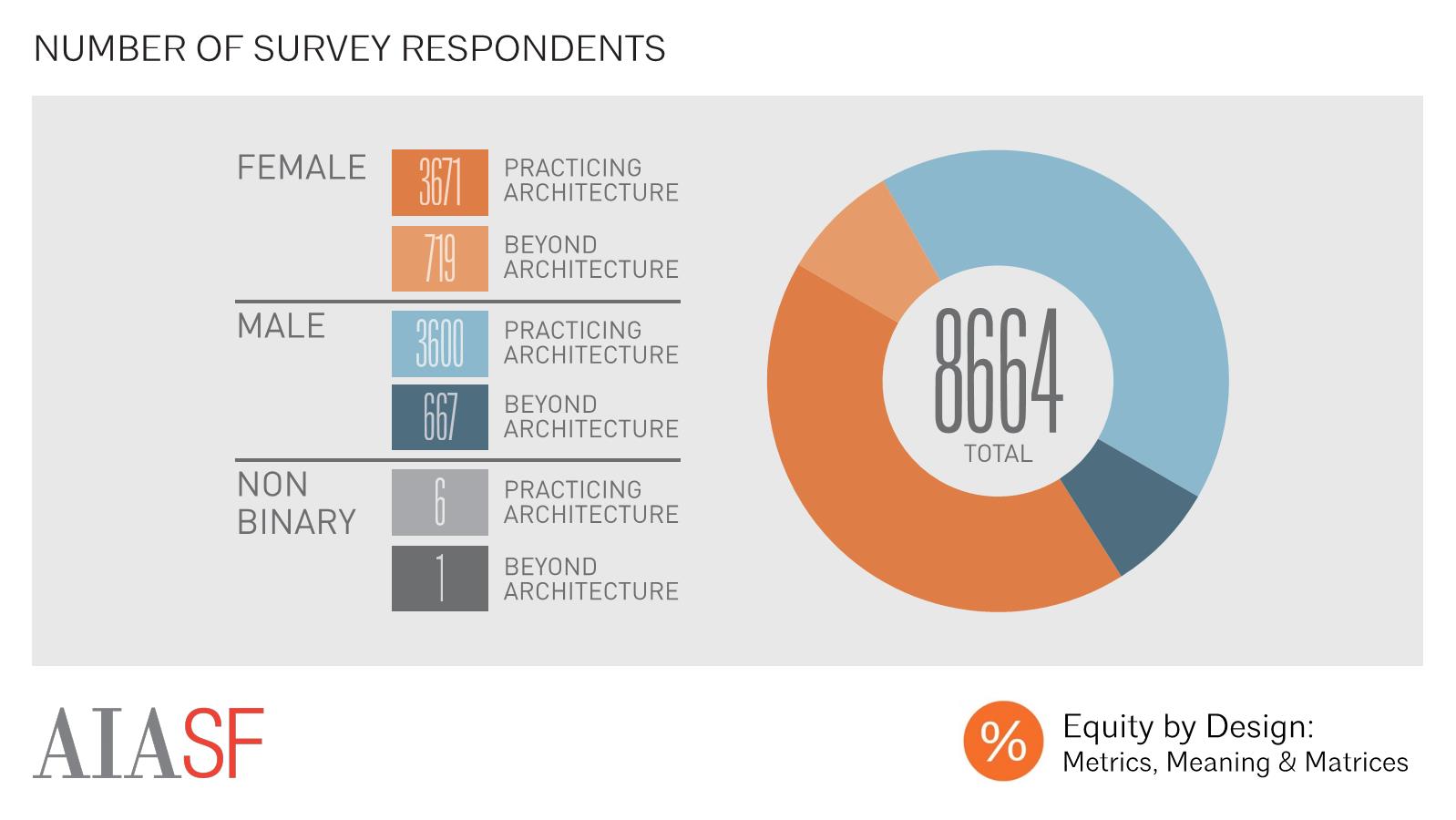
Gender of Survey Respondents
Overall, 8,664 respondents participated in the survey, making this the largest survey ever conducted on the topic of equity in architecture in the U.S. Of our 8,664 survey responses, roughly 50% identified as female, and 50% identified as male. We also had a small number of respondents (<1%) with non-binary genders. The non-binary gender sample was too small to allow us to conduct statistically valid analysis on this group on the basis of gender. We hope to over-sample this population in the future in order to be able to conduct more meaningful analysis on this group’s experiences. By comparing this to data from the AIA Firms Survey Report, we can see that the 2016 Equity in Architecture Survey over-samples women, who make up only 31% of architectural staff in AIA member-owned firms.
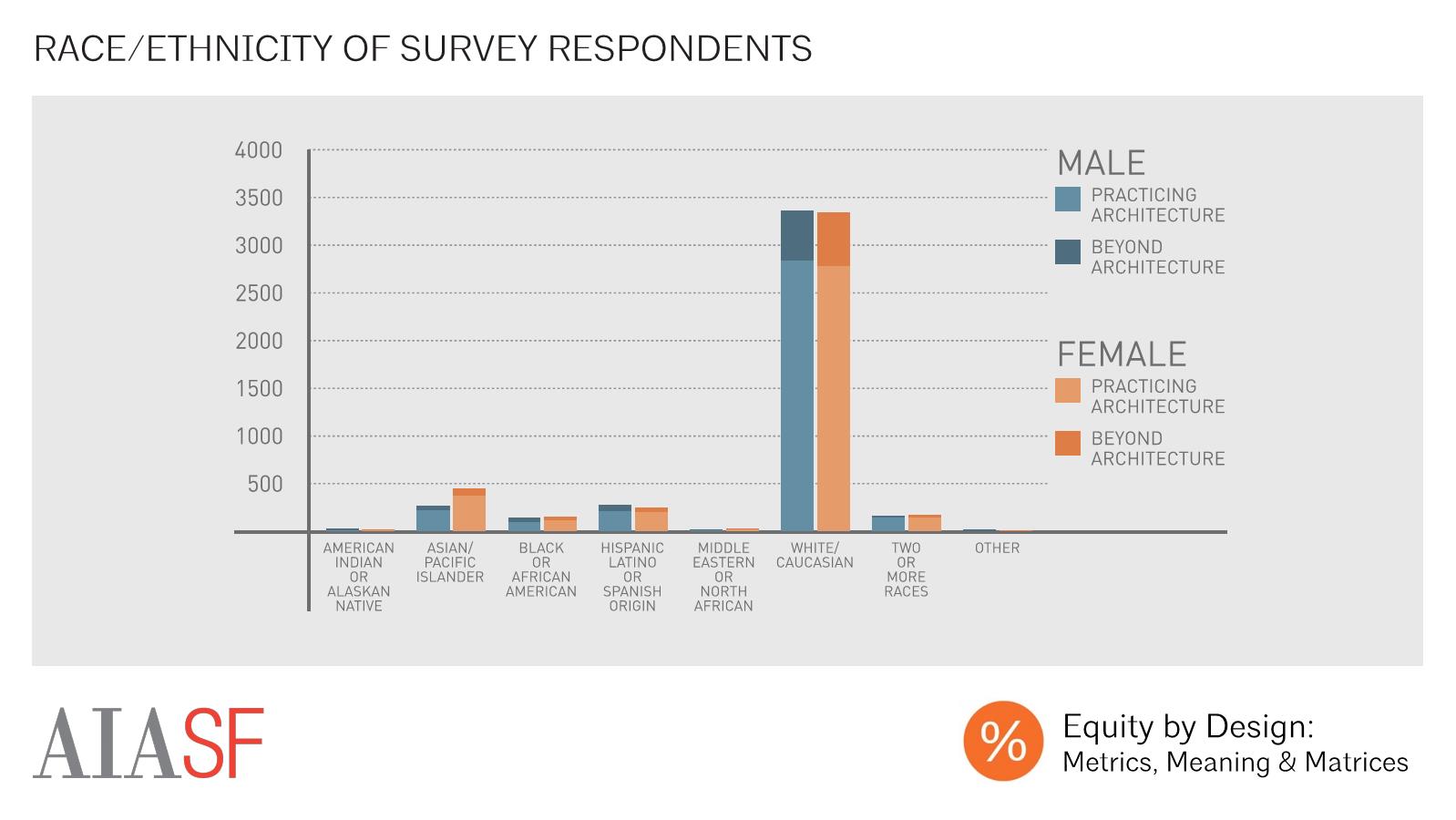
Race/Ethnicity of Survey Respondents
While we had a relatively even gender representation in our respondent pool, there was little racial or ethnic diversity, with 78% of respondents describing themselves as “white or caucasian.” According to the 2016 AIA Firm Survey Report, approximately 21% of the architectural staff working in AIA member-owned firms are people of color, suggesting the the 2016 Equity in Architecture Survey sample is fairly representative of the racial and ethnic diversity of AIA member-owned architectural firms. While the sample was representative as a percentage of the field, this also meant that it was quite small compared to the sample of the white population. This sample size, coupled with high degrees of response variability within this population, made drawing statistically valid conclusions on the basis of individual racial or ethnic group impossible for most questions due to insufficient sample size. In future rounds of study, we hope to gather more responses from people of color in order to be able to better understand equity issues as they relate to individual racial and ethnic groups.

Sexuality of Survey Respondents
The survey population also had little diversity in terms of sexual orientation, with 86% of male respondents, and 92% of female respondents, identifying as straight, or heterosexual. The datasets that we typically use to understand the demographics of the profession -- including those from NAAB, NCARB, and the AIA -- don’t include statistics on the sexual orientations of architectural practitioners, so we can’t make any conclusions about how our sample compares to the architectural community on this issue.
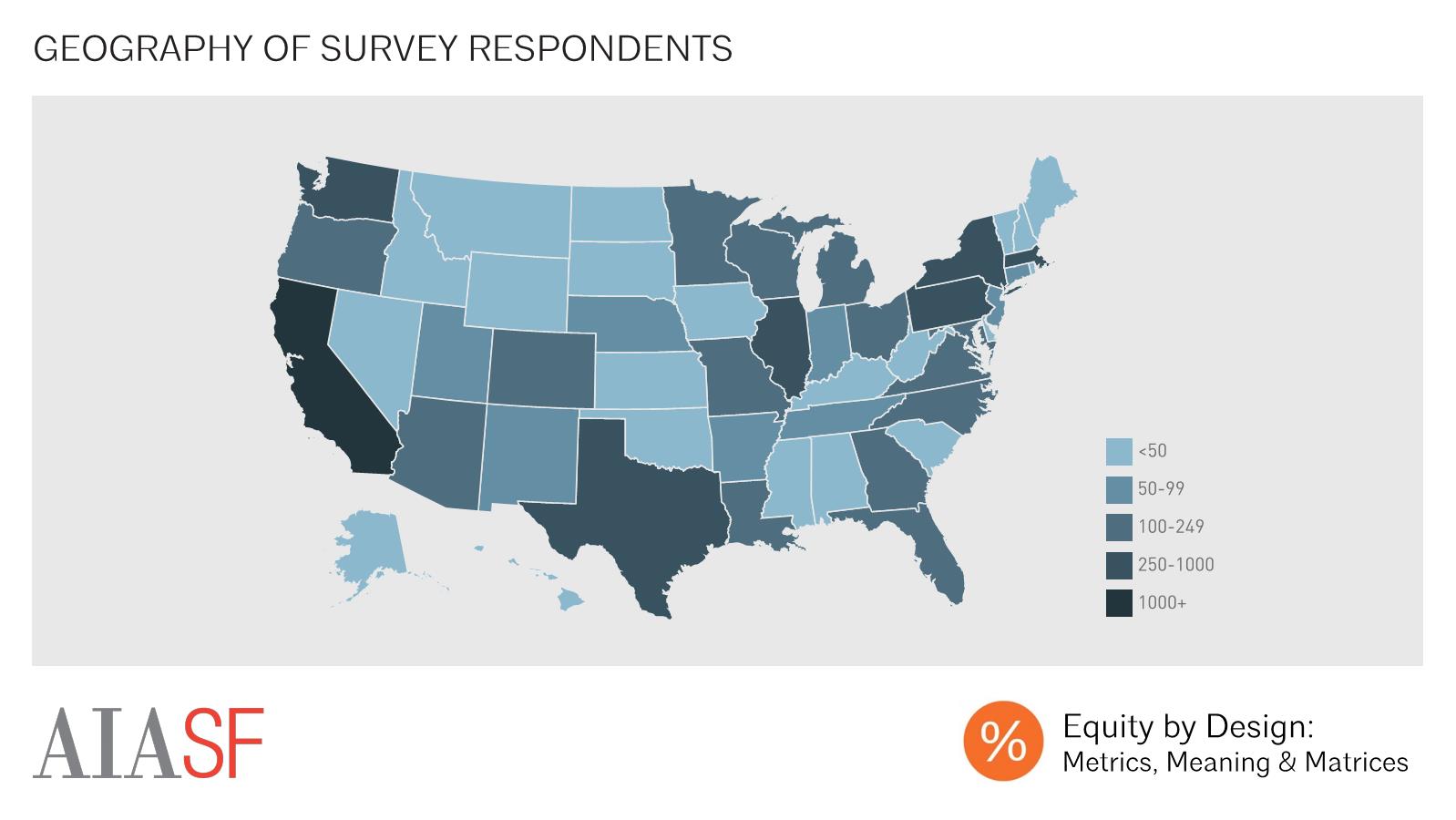
Geography of Survey Respondents
Our respondents’ geographic location was also fairly representative of the distribution of architectural professionals in the country, with heavy concentrations of respondents in states like California, New York, and Illinois. Overall, we received survey responses from all 50 states, as well as from foreign countries on six continents.
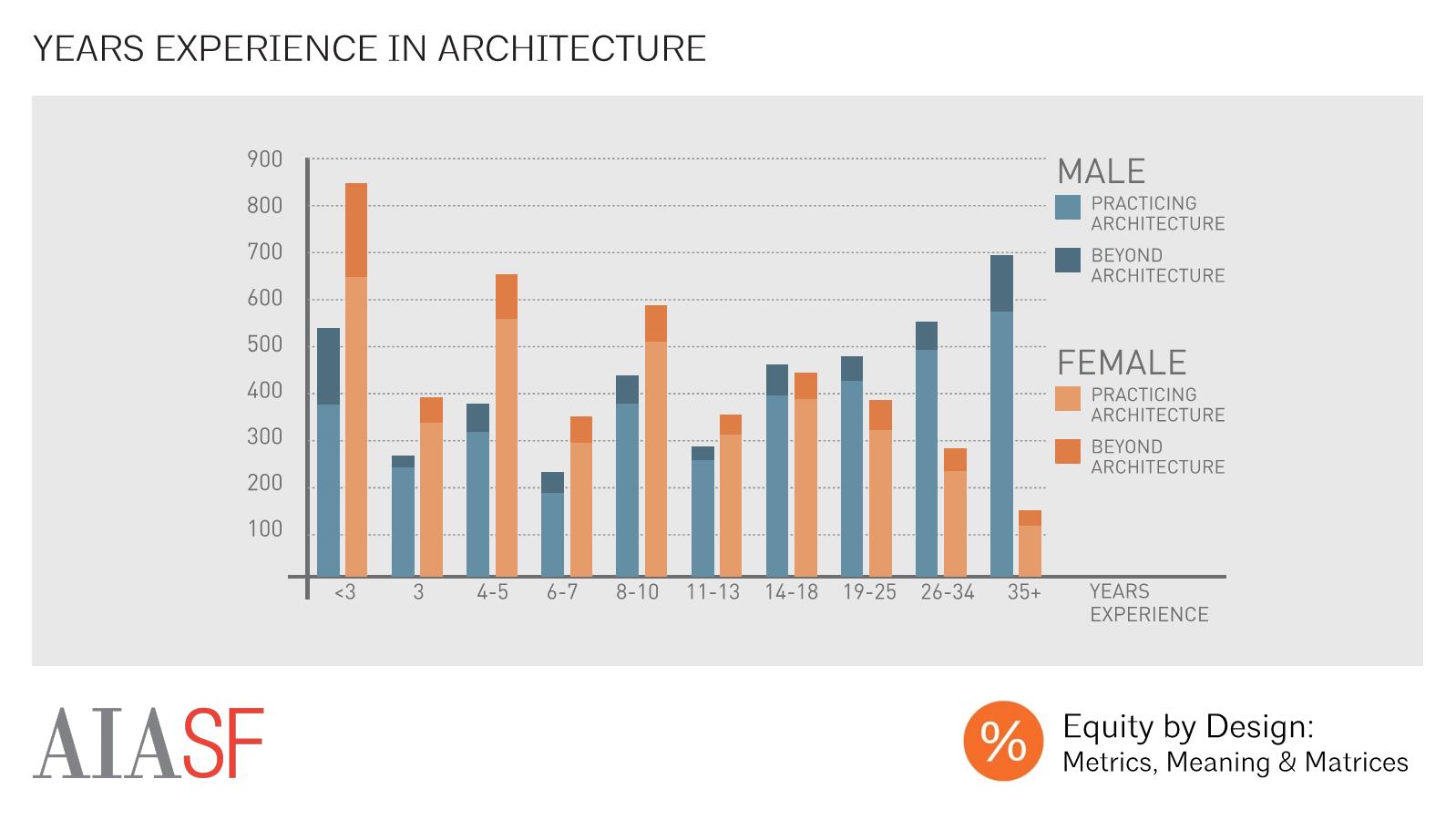
Years Experience in Architecture
There was an interesting pattern in the experience level of our respondents. While the majority of our less experienced respondents were female, the majority of our respondents with more than 14 years of experience were male. In some ways, this is representative of what’s been called the “pipeline problem” in architecture. For instance, men were much more likely than women to have graduated from architecture programs 25 years ago, and so it makes sense that there are many more men than women with 25 years of experience today. For practical purposes, though, this means that it’s very hard to simply compare men to women in our results without also introducing confounding age and experience-level-related distinctions. That’s part of why you’ll see that we often analyze variables like salary by both gender and years of experience.
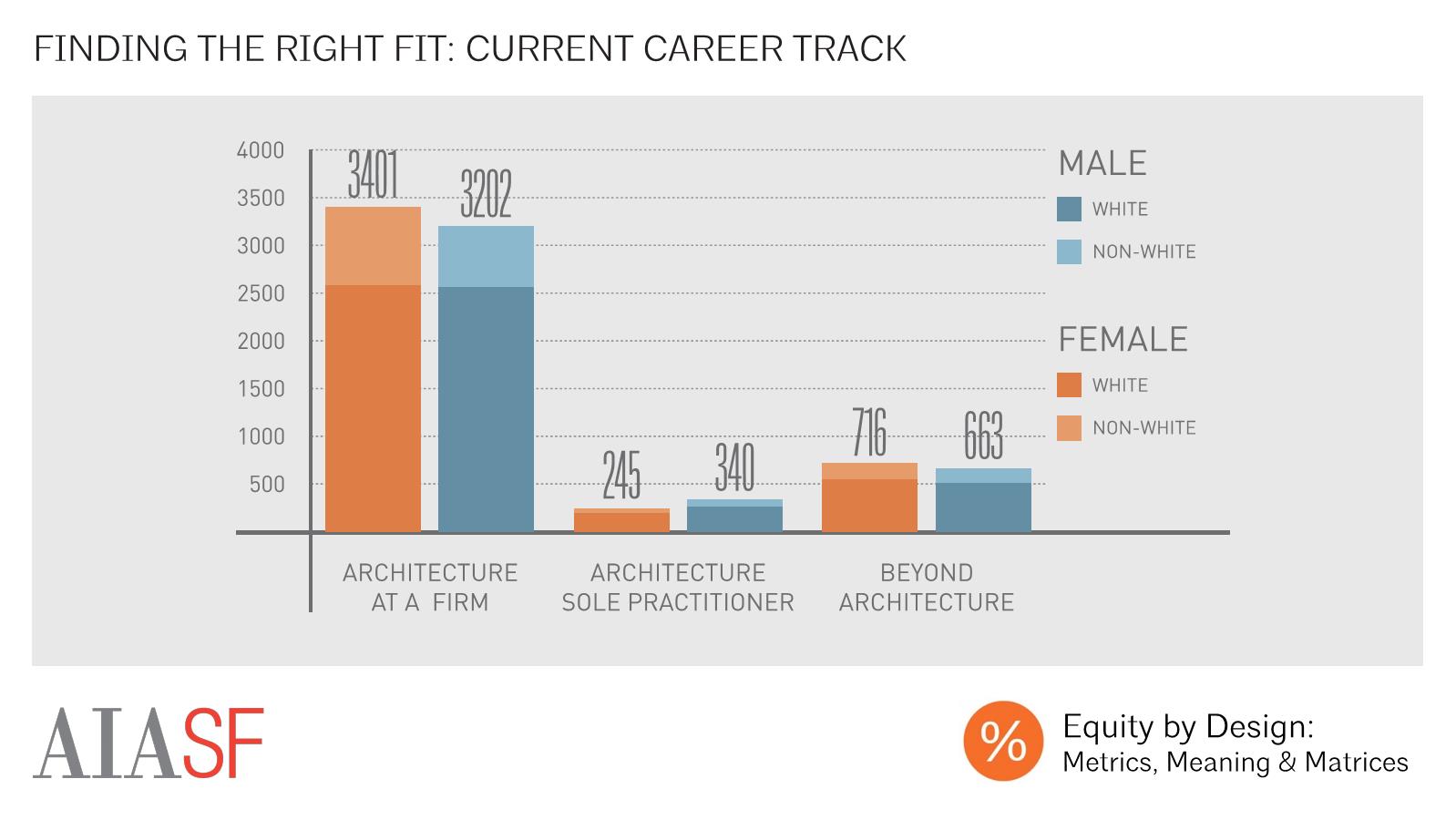
Current Career Track
Because our study sampled architecture school graduates, not all respondents were currently working in architecture firms. The majority - 84% of all respondents - were currently practicing architecture, either within a firm or as a sole practitioner. There weren’t significant differences in respondents’ likelihood of practicing architecture on the basis of either race or gender. There were, however, differences in work setting amongst those who practiced architecture. For those practicing architecture, a firm was the most common work setting. This was especially true for women of color, who were only half as likely (4%) as either white men (8%) or men of color (8%) to work as a sole practitioner. In addition to those who were currently working in a firm or as a sole practitioner, we had a significant number of respondents who weren’t working in one of these settings, and may have been working in a related field or in another industry, providing full-time care for a family member, studying, unemployed, or retired. We have used the label "beyond architecture" throughout our analysis to identify this diverse population.





